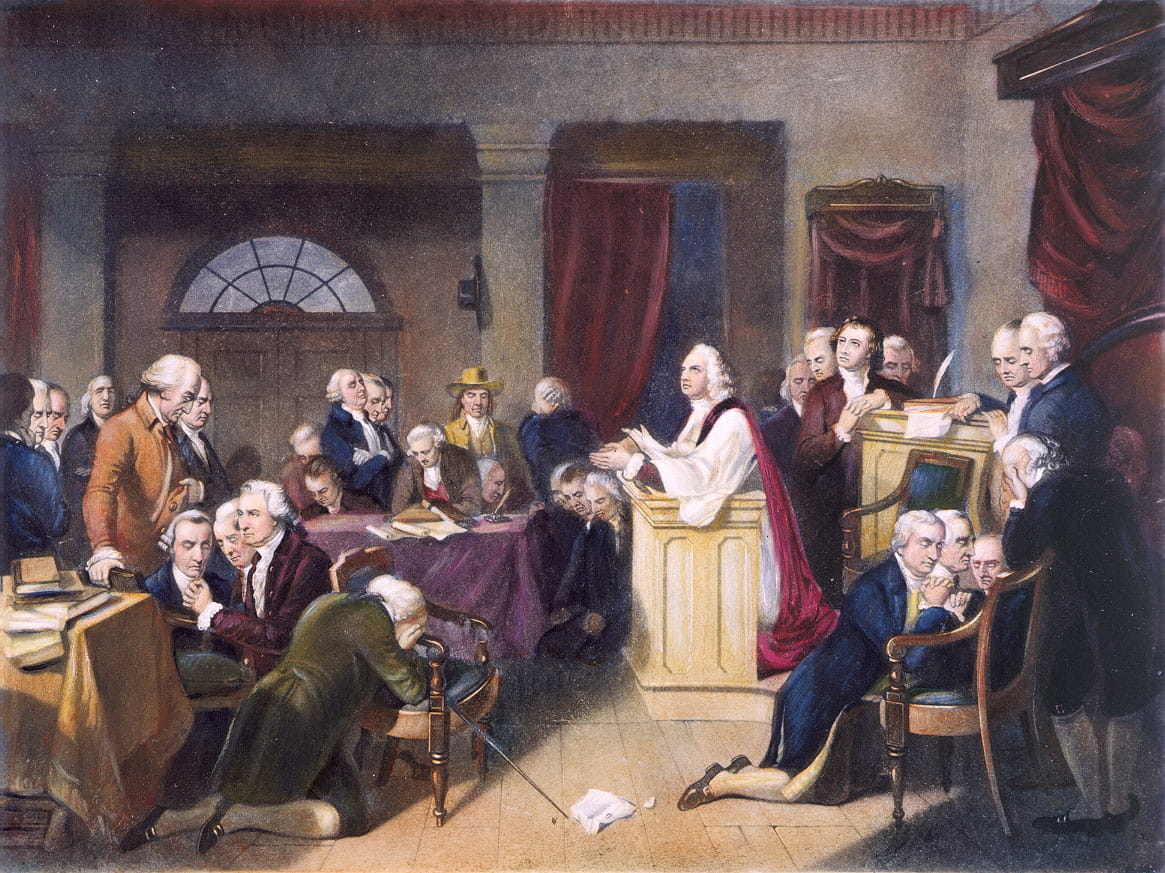If someone were to mention the Continental Congress, your thoughts might drift to a dimly lit room filled with stern-faced men. But this gathering was so much more! It was where the embryonic United States flexed its first muscles of defiance. From fascinating rifts between delegates to clandestine meet-ups in Philadelphia, the Congress was a hotbed of action and drama.
Did you know it triggered the first-ever large scale boycott of British goods in America? Or that it initiated the creation of our own currency? Here are some fun facts about the Continental Congress to add a dash of flair to your historical knowledge.
1. A Revolutionary Beginning: The First Continental Congress in 1774
Pop quiz: When and where did the first Continental Congress meet? If you guessed September 5 to October 26, 1774, in Philadelphia, gold star for you! Triggered by the British’s controversial Coercive Acts, this wasn’t a mere coffee catch-up. Twelve of the thirteen colonies sent a whopping 56 delegates, with Georgia being the lone holdout.
Their main course of action? Crafting the “Declaration and Resolves,” which both outlined colonial grievances and called for a boycott of British goods. By the end of 1774, imports from Britain plummeted by a staggering 97%!
2. Not-So-United: The Divided Decision on Declaring Independence
Here’s an interesting fact you might not know: when the 2nd Continental Congress gathered, unity was a pipe dream. Many aimed for peace with Britain, while a zealous few yearned for independence. A major catalyst? Thomas Paine’s “Common Sense,” which sold a staggering 500,000 copies in 1776, influencing both common folk and delegates alike.
By July 2, 1776, the Congress voted in favor of independence. Yet, it’s essential to remember this wasn’t a one-sided chorus but a medley of diverse voices, each clamoring for a different future.
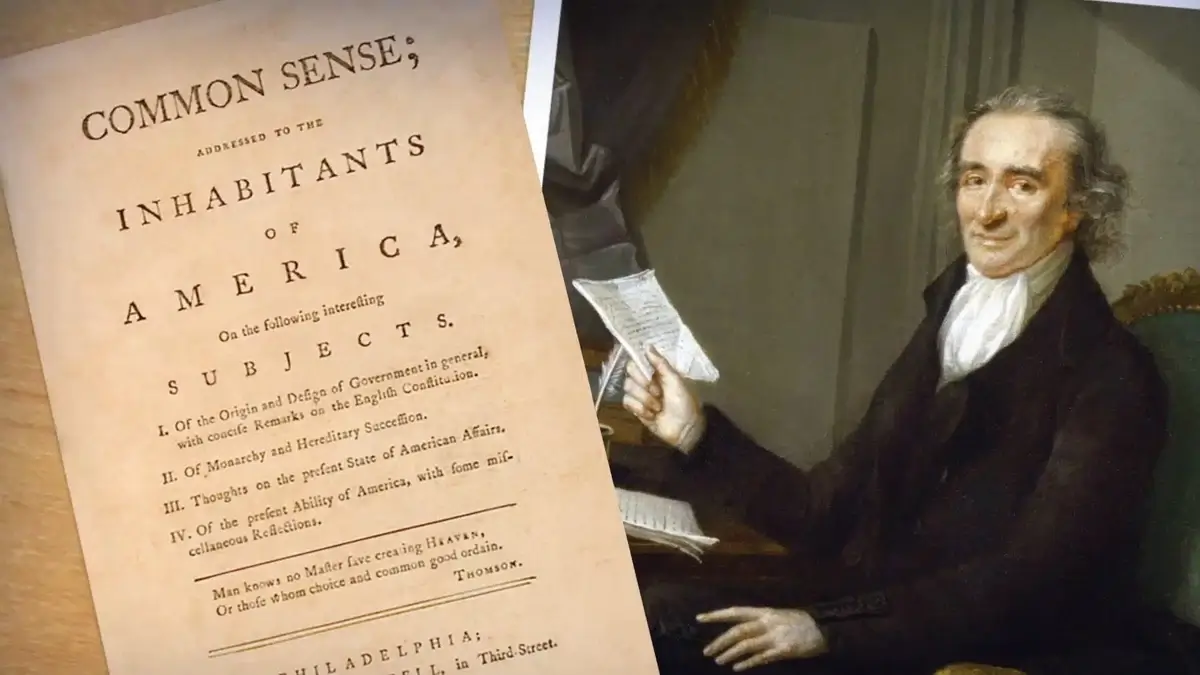
Image: schoolworkhelper.net
3. Philadelphia’s Finest Hour: The Role of the City in the Congress
What do the first and second Continental Congress have in common, apart from heated debates and revolutionary decisions? Their venue: Philadelphia. Strategically positioned between the northern and southern colonies, it was the de facto gathering spot.
And while we’re talking numbers, the Pennsylvania State House (now Independence Hall) saw 56 delegates from 12 colonies in the first Congress. By the time the second rolled around, Georgia decided to join the party, making it a full house. Here, groundbreaking documents like the Declaration of Independence and the Articles of Confederation were penned.
4. Secretive Shenanigans: The Congress’s Private Meeting Places
Remember those secret hideouts you had as a kid? Well, the Continental Congress had its own versions! Given the tense climate, delegates often had to meet discreetly. In fact, locations shifted frequently to avoid British detection. While Philadelphia’s Carpenter’s Hall and the Pennsylvania State House were primary venues, delegates held hush-hush gatherings in homes and other undisclosed spots.
Security wasn’t just for show. The British had spies everywhere, eager for any tidbits to relay back home. The Congress’s ability to keep pivotal decisions under wraps was a testament to their dedication and craftiness.
5. Mighty Marine Moment: The Creation of the Continental Navy
Did you know that the birth of the U.S. Navy was thanks to the Continental Congress? As the Revolutionary War raged on, there was an urgent need to counter British naval power. In October 1775, the Congress took a leap, commissioning two vessels. This modest start eventually ballooned, and by the end of 1775, they had authorized the creation of 13 frigates.
While the Continental Navy was often outmatched and outnumbered, it played a pivotal role in disrupting British supply lines. Plus, it was the springboard for the formidable U.S. Navy we know today!
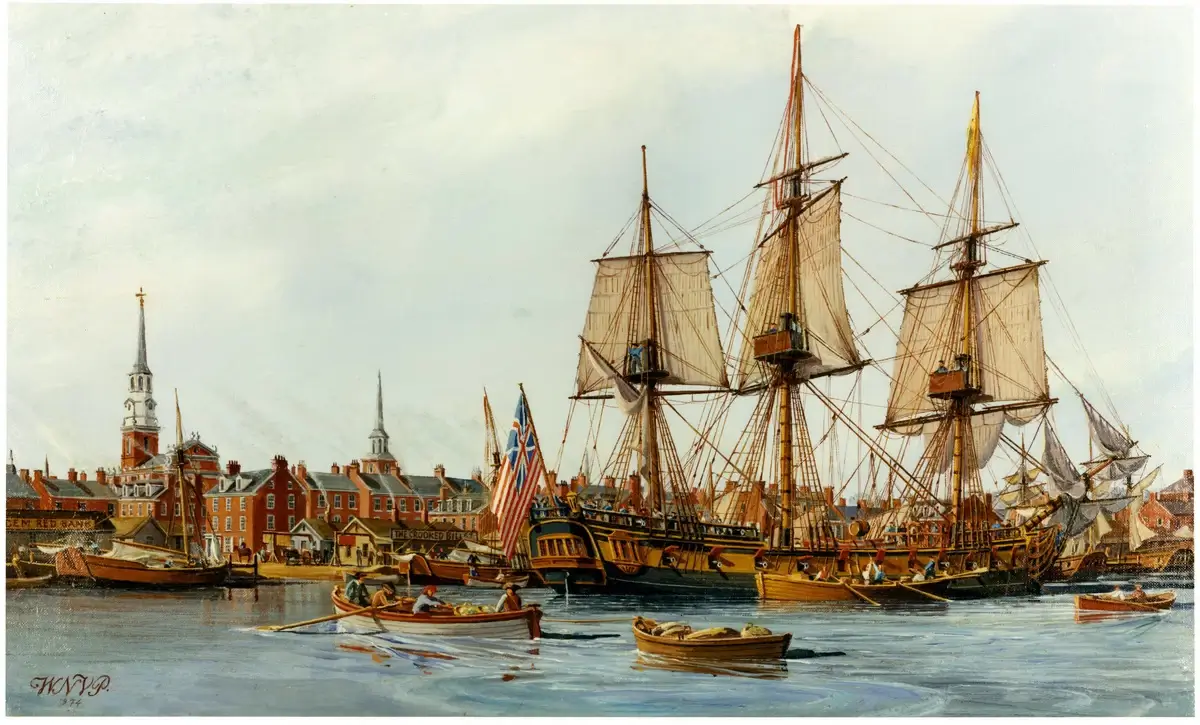
Image: Wikimedia Commons
6. Putting Pen to Paper: Drafting the Declaration of Independence
The Declaration of Independence wasn’t conjured overnight. It underwent rigorous debates and revisions. Tasked with this monumental duty was a Committee of Five, including heavyweights like Thomas Jefferson, Benjamin Franklin, and John Adams. Jefferson, with his elegant prose, took the lead in drafting.
Presented to Congress on June 28, 1776, the draft faced further scrutiny and changes. By July 4, after hours of meticulous debate, the revised document was adopted. This wasn’t just about declaring independence; it was framing the ethos of a new nation.
7. British Bothers: How the Congress Reacted to the British Government
The Continental Congress wasn’t just strategizing military moves or drafting declarations. A significant part of their task was reacting to Britain’s ever-shifting policies. For instance, the Intolerable Acts of 1774, a punitive response to the Boston Tea Party, irked the colonies. In retaliation, the Congress endorsed the Suffolk Resolves, which called for civil disobedience.
Britain’s continual disdain for colonial autonomy, showcased through acts like the Quartering Act or the Declaratory Act, only fueled the fire. The Congress was always in reactive mode, juggling between peaceful negotiations and rallying for resistance.
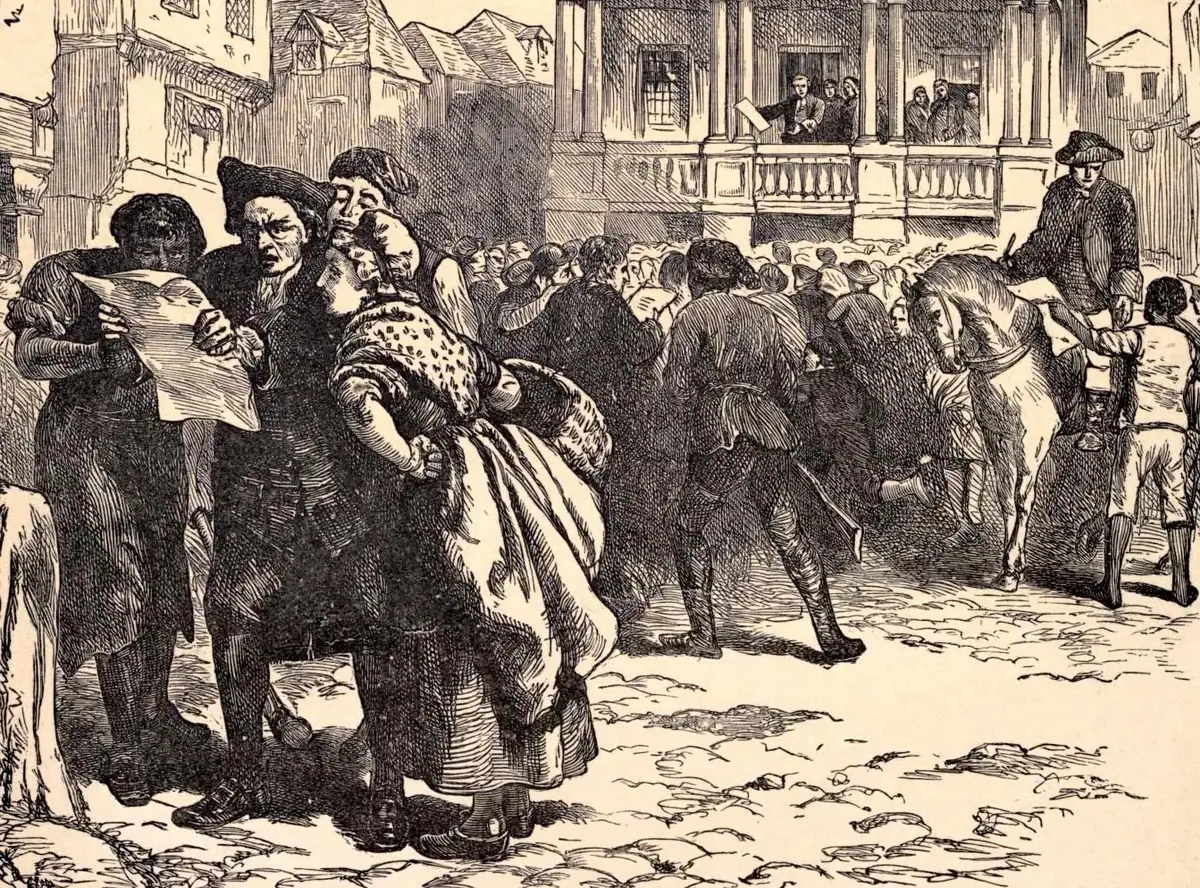
Image: Britannica
8. The Who’s Who: Notable Delegates of the Congress
Mention the Continental Congress, and names like John Adams and Thomas Jefferson spring to mind. But this was a congregation of brilliance! John Jay went on to co-author the Federalist Papers and served as the first Chief Justice of the Supreme Court. Then there’s Roger Sherman, the only person to have signed all four of the U.S.’s major founding documents. And don’t forget Caesar Rodney, who made a dramatic midnight ride (much like Paul Revere) to cast a crucial vote for independence.
These men weren’t just names on parchment; they were dynamic figures who shaped the very foundation of the United States.
9. Post-Declaration Drama: The Events After the Declaration in 1776
If you think the drama subsided post Declaration of Independence, think again! After that monumental step in 1776, the Congress grappled with creating a functioning government. In 1777, they approved the Articles of Confederation, although it took until 1781 for all 13 states to ratify them. Moreover, they had to oversee the Revolutionary War, strategize alliances (like the crucial one with France in 1778), and manage finances without a stable currency.
In essence, after declaring independence, the real work had only just begun!
10. Bouncing Between Buildings: The Multiple Meeting Locations of the Congress
Philadelphia’s Independence Hall might be iconic, but the Continental Congress didn’t plant its roots there alone. Due to war threats and other dynamics, it was a game of musical chairs! New York’s City Hall was a host in 1785, followed by Nassau Hall in Princeton in 1783. The Congress even ventured south, gracing Maryland’s State House in 1783-1784.
This nomadic existence wasn’t just out of whim; it was a necessity, given the volatile backdrop of revolution and war.
11. Stamping Out Tax: The Congress’s Take on the Stamp Act
Taxes, nobody likes them. But the Stamp Act of 1765 was a particular thorn in the colonies’ side. Enforced by the British government, it imposed taxes on printed materials. The reaction? Outrage! The Congress convened in 1765 to discuss it and concluded with the Declaration of Rights and Grievances. This wasn’t just a complaint note; it questioned Britain’s right to tax the colonies without representation.
This fervent pushback set the stage for later revolutionary actions and showcased the Congress’s knack for organized resistance.
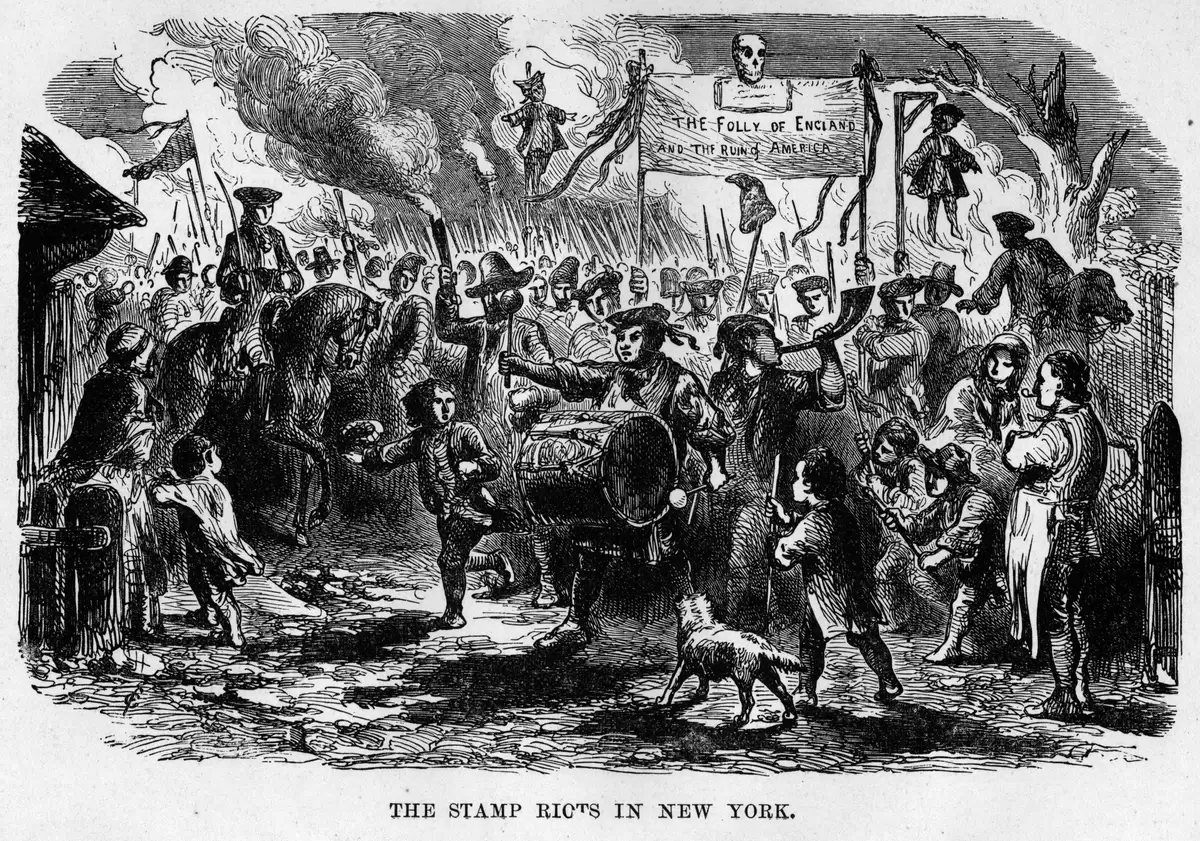
Image: history.com
12. Money Matters: The First U.S. Currency by the Congress
Ah, money – it makes the world go round! The Continental Congress realized this early on. As the Revolutionary War raged, funds were direly needed. Enter the Continental Currency! Issued between 1775 and 1779, these bills were America’s first attempt at a unified currency. The quirky bit? Some denominations had peculiar values, like $7 or $8.
But there was a catch. With no gold or silver backing and rampant counterfeiting, its value plummeted. “Not worth a Continental” became a popular saying. Still, it was a start, laying the foundation for the mighty dollar today.
13. United, Yet Divided: The 13 Colonies and their Varied Views
The 13 colonies might’ve rallied under one banner, but boy, their views were diverse! While New England colonies were hotbeds for revolution fervor, others, like New York and Pennsylvania, had strong loyalist pockets. The Southern colonies? Their loyalty teetered, especially as the British promised emancipation to enslaved individuals who fought for them.
This patchwork of views made the Continental Congress’s decision-making process complex, weaving a tapestry of negotiations and compromises.
14. Friend or Foe?: How Other Nations Reacted to the Congress’s Actions
When the Continental Congress made its moves, the world watched. France, sensing an opportunity to dent its British rival, became America’s ally by 1778. Spain and the Dutch Republic too offered covert support. On the flip side, Native American tribes, fearing colonial expansion, largely sided with the British.
These global reactions weren’t just diplomatic postures; they played crucial roles in the war’s progression and outcome.
15. A Historical Legacy: The Lasting Impact of the Congress on Modern America
Beyond declarations and wars, the Continental Congress left an indelible mark on America’s psyche. Its debates birthed American federalism. The emphasis on states’ rights versus centralized power remains a hot topic today. Plus, the Congress’s push for individual freedoms set the tone for the Bill of Rights and subsequent amendments.
Simply put, every time modern America grapples with governance questions, the echoes of the Continental Congress resonate.
FAQ
What did the First and Second Continental Congress do?
The First Continental Congress (1774) was convened as a response to the British Parliament’s “Intolerable Acts.” This Congress deliberated on how the colonies should respond to what they saw as British overreach. They endorsed the Suffolk Resolves, boycotted British goods, and petitioned King George III to redress their grievances.
The Second Continental Congress (beginning in 1775) was a different beast. As the Revolutionary War ignited, this Congress became the de facto national government. They organized a Continental Army with George Washington as its commander, issued currency, negotiated with foreign powers, and, most famously, adopted the Declaration of Independence in 1776.
How long did the Continental Congress last?
The Continental Congress refers to two major legislative bodies. The First Continental Congress convened from September 5 to October 26, 1774, lasting nearly two months. The Second Continental Congress, on the other hand, ran much longer, from May 10, 1775, to March 1, 1781. It was replaced by the Congress of the Confederation when the Articles of Confederation became the new framework of governance.
How many times did the Continental Congress meet?
The term “Continental Congress” primarily refers to two distinct assemblies. The First Continental Congress met once in 1774. The Second Continental Congress convened in 1775 and continued its sessions, with some interruptions and location changes due to the Revolutionary War, until 1781. So, while there were technically two “Congresses,” the second one had numerous sessions spanning several years.
Why was the First Continental Congress created?
The First Continental Congress was birthed out of colonial frustration with British policies. Following the Boston Tea Party in 1773, the British Parliament passed a series of punitive measures known as the “Intolerable Acts” (or Coercive Acts). These acts shut down Boston’s port and altered the Massachusetts Charter, among other things. Outraged by these actions, colonies decided to convene a congress to discuss collective responses and articulate their rights and grievances.
Which actions were taken by the First Continental Congress?
Several pivotal actions emerged from the First Continental Congress. They endorsed the Suffolk Resolves, a defiant response to the Intolerable Acts. The Congress also crafted the Continental Association, which implemented an embargo on British goods. Their Declaration and Resolves detailed the rights of colonists and showcased their grievances against British policies. Lastly, they sent a direct petition to King George III, seeking a redress for their grievances, while concurrently urging every colony to raise militias in preparation for potential conflict.
How long did the Second Continental Congress last?
The Second Continental Congress kicked off its work on May 10, 1775, and wrapped up on March 1, 1781. So, in essence, it lasted for nearly six years. This Congress played a more extensive role than its predecessor, overseeing the Revolutionary War and laying the groundwork for the new nation, culminating in the ratification of the Articles of Confederation.


